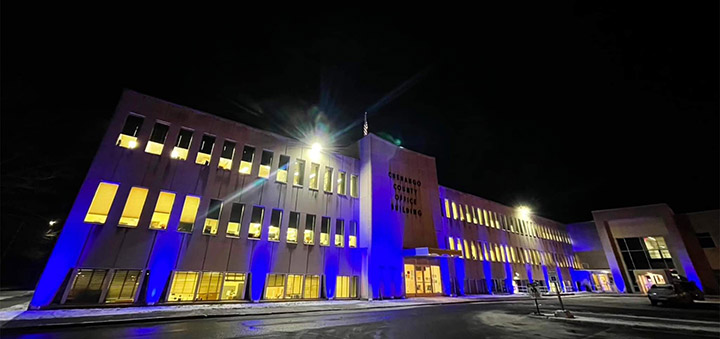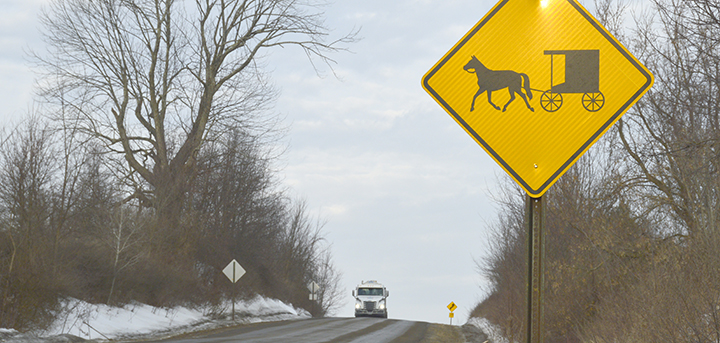What Does Human Trafficking Look Like In Chenango County?
Published:
February 16th, 2022
By:
 On January 11, National Human Trafficking Awareness Day, the Chenango County Child Advocacy Center (CAC) teamed up with Live Event NY to implement the "Blue Light Campaign." Pictured is the County Office Building participating in the campaign to raise awareness of human trafficking. The CAC and Live Event NY also displayed blue lights on their buildings to participate in the campaign. (Photo by Live Event NY)
On January 11, National Human Trafficking Awareness Day, the Chenango County Child Advocacy Center (CAC) teamed up with Live Event NY to implement the "Blue Light Campaign." Pictured is the County Office Building participating in the campaign to raise awareness of human trafficking. The CAC and Live Event NY also displayed blue lights on their buildings to participate in the campaign. (Photo by Live Event NY)
CHENANGO COUNTY – It’s important for the community to recognize what someone who is at risk of being sexually exploited or trafficked looks like, and how Safe Harbour can help prevent that from happening.
According to Child Advocacy Center (CAC) Case Manager Liz Simcoe, Safe Harbour is a program dedicated to prevent trafficking and sexual exploitation by identifying victims then providing them with education and services. She said the program helps youths between ages 12 and 21 by providing them with non-judgmental assistance including transportation, housing, education, and legal advocacy depending on their needs.
“Many of the people being trafficked in this community are youths, but it’s usually not like what people expect with a child being grabbed off of the streets,” said Simcoe. “These kids go home to their families, they serve you food at local businesses, they’re the kids you’re teaching in schools, but they’re being persuaded that a form of slavery is okay if it gets them what they need.”
Simcoe said the reality is that oftentimes children and young adults are being told that performing sexual acts is the only way they can get items that they want or need.
“That might look like someone needing a place to stay, and being convinced that they can perform some sexual act to stay at that place,” she said. “They might be struggling with addiction, and they’re convinced to engage in acts to get drugs.”
“We have seen cases where parents are telling their children to sleep with the landlord in order to cover rent.”
Education is a key factor in preventing trafficking, as youth are often raised to think and feel a certain way, said Simcoe. She said part of the Safe Harbour program is designed to focus on raising self-confidence and self-respect, along with respect for others.
“We’re trying to help them become adults knowing that they’re capable, that they can adapt, and they don’t have to rely on giving themselves up just to survive,” she added. “We’re completely transparent with them, and while there are some things we have to report there are a lot that we don’t.”
She said that in order to help the victims they need them to be referred to the Child Advocacy Center by their parents, another agency, or the victim needs to reach out on their own.
“There is a release to sign, but if the parents aren’t consenting to it, or the youth doesn’t want to tell the parent about it there are ways we can work around that,” said Simcoe. “Unfortunately that does limit the level of service that we’re able to provide, but at least it starts to get them the help they need.”
Anyone interested in learning more about Safe Harbour may visit the Child Advocacy Center’s Facebook page at ChenangoCAC, the CAC’s website at chenangochildadvocacy.us, or national sites like love146.org and missingkids.org, where there is also a tip line to report suspicions of exploitation.
Simcoe said if community members want to get involved, they can contact the CAC directly at (607) 334-KIDS (5437).
- Submitted by the Chenango Child Advocacy Center
Comments





